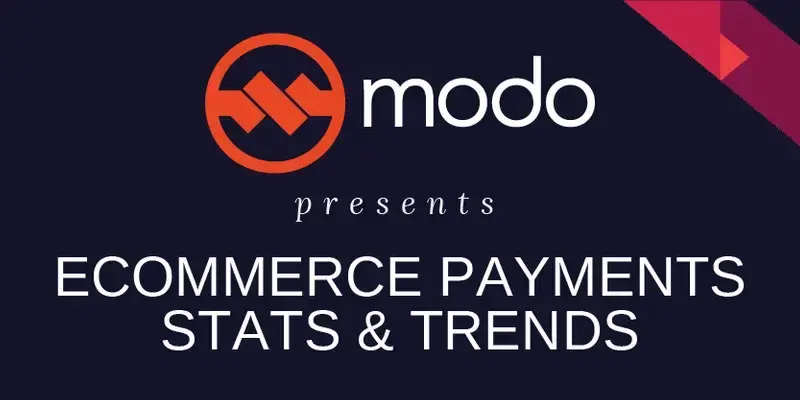eCommerce Payment Industry Trends—Are You Ready?
Seismic shifts are happening in the online payment processing industry. A massive growth in eCommerce combined with a widening online payments market and ubiquitous access to mobile devices is revolutionizing how customers spend their hard-earned money.
As an eCom merchant, if you want to surf this wave, you need to be prepared. Let’s explore some current stats and trends together, and help you keep your balance as you navigate these ever-changing waters.
eCommerce is Growing Fast—Really, Really Fast
Worldwide, we’ll be spending over $4.5 trillion online by 2022. That’s $4,500,000,000,000! For some context, if you were to turn that $4.5 trillion into dollar bills, laid end-to-end, they would circle the Earth nearly 20,000 times. Although it’s likely to be Amazon, Walmart, Ali Baba, and the other online eCommerce giants that take a biggest bite of that pie, there’s still going to be plenty leftover for other online retailers.
It’s not hard to guess that that volume of transactions is going to put a lot of strain on card networks, banks, payment processing gateways, and other back office systems. You’ll need a lightning-fast, agile payment stack optimized to eliminate delays while still providing fraud prevention and proper authentication.
Online Merchants are Exploring Payment Processing Options Like Never Before
It’s not just consumers that have bucket loads of eCommerce choices—so do merchants. With the growth of the payment processing industry, there are hundreds of options for taking payments, sharing information, identifying fraud, payment gateways, and so much more. Seven in 10 online merchants plan to swap their outside payment vendors, with half of all eCommerce merchants adding at least three new vendor technologies to their online stores and payment stacks.
The word here is interoperability. You don’t want to bring in a dazzling new technology only to find out it doesn’t play well with others. At the same time, this also needs to be completely transparent to your consumer. Focus on delivering an awesome, end-to-end shopping and payment experience that leaves them delighted.
Your Customers are Ditching the Plastic for Other Options
Credit and debit cards have dominated for so long, it’s hard to imagine a world without them. But, just like the decline of the checkbook, plastic is declining as a payment option. That’s especially true online, where alternatives to credit and debit cards already account for more than half of all eCommerce transaction volume.
There are two major, related reasons for this—eWallets and mCommerce (mobile commerce). Major tech companies are getting in on this trend and offering their own bespoke payment systems (think Apple Pay, Amazon Pay, Google Pay), but that’s just the start.
Consumers want convenience and a hassle-free, secure way to store all their payment details and credentials in one place. That means any payment processor or online payment provider you work with must have robust eWallet and mCommerce solutions and integrations.
eWallets are Going Mainstream
An electronic or digital wallet, known as an eWallet, is simply an electronic device or online service that allows consumers to make transactions. For example, an eWallet may be connected to an individual's bank account, debit card, or cryptocurrency balance. Once funded, the payment credentials on the phone or online service can easily be passed to an eCommerce merchant through a secure payment system.
eWallets are growing in popularity and expected to be the leading method for online payments by 2022, with market share expected to grow by a third in the next five years. Generation Y—the children of the 80s and 90s are leading the charge, with almost two-thirds of Gen Y Americans using eWallets. Not to be outdone, four in 10 Gen X’ers are also giving the technology a spin. With this growth, you’ll need to ensure your stack can handle this switch in consumer behavior.
mCommerce Grows Past Traditional Retail
mCommerce was long seen as a contactless way to pay for small items using a chip embedded in a smartphone. While that’s fine for traditional retail, we’re now seeing growth in the online payments market through a couple of other channels: Deep integration of eWallets into mobile devices and shopping-on-the-go.
We’ve already covered eWallets, so it’s worth diving into the smartphone or tablet as a shopping device.
An astonishing eight in 10 smartphone users have made a purchase on their mobile device over the last six months. Whether that’s through dedicated apps, a smartphone visit to a mobile-enabled online store, or third-party payment processors, that’s a big percentage! Analysts saw eCommerce sales grow from 39 percent in 2018 to 45 percent in 2019 and expect mobile sales to overtake desktop transactions by 2023.
The customer experience must be seamless across all devices, so you’ll need a flawless payment system that works beautifully across phones, tablets, laptops, and desktops.
Online Merchants are Ready to Spend Big
It’s not just consumers increasing their spending for online payments. Merchants are spending an average of $2.6 million to upgrade their eCommerce payment processing to meet these new demands. Whether it’s keeping up with the massive growth in online sales, offering consumers more of what they want, or optimizing backend systems for speed, security, and reliability, you’ve got to spend money to make money.
Ready to Chart New Territory?
It’s not enough to tread water in the online payments marketplace—you need to surge forward. Think about how your technology stack is going to change along with the fast-paced growth of the payment processing industry.
Charting this new territory doesn’t have to be scary, and you don’t have to go it alone. Learn how a third-party payments platform can help transform and simplify your payments stack and give your customers the streamlined experience they demand.

